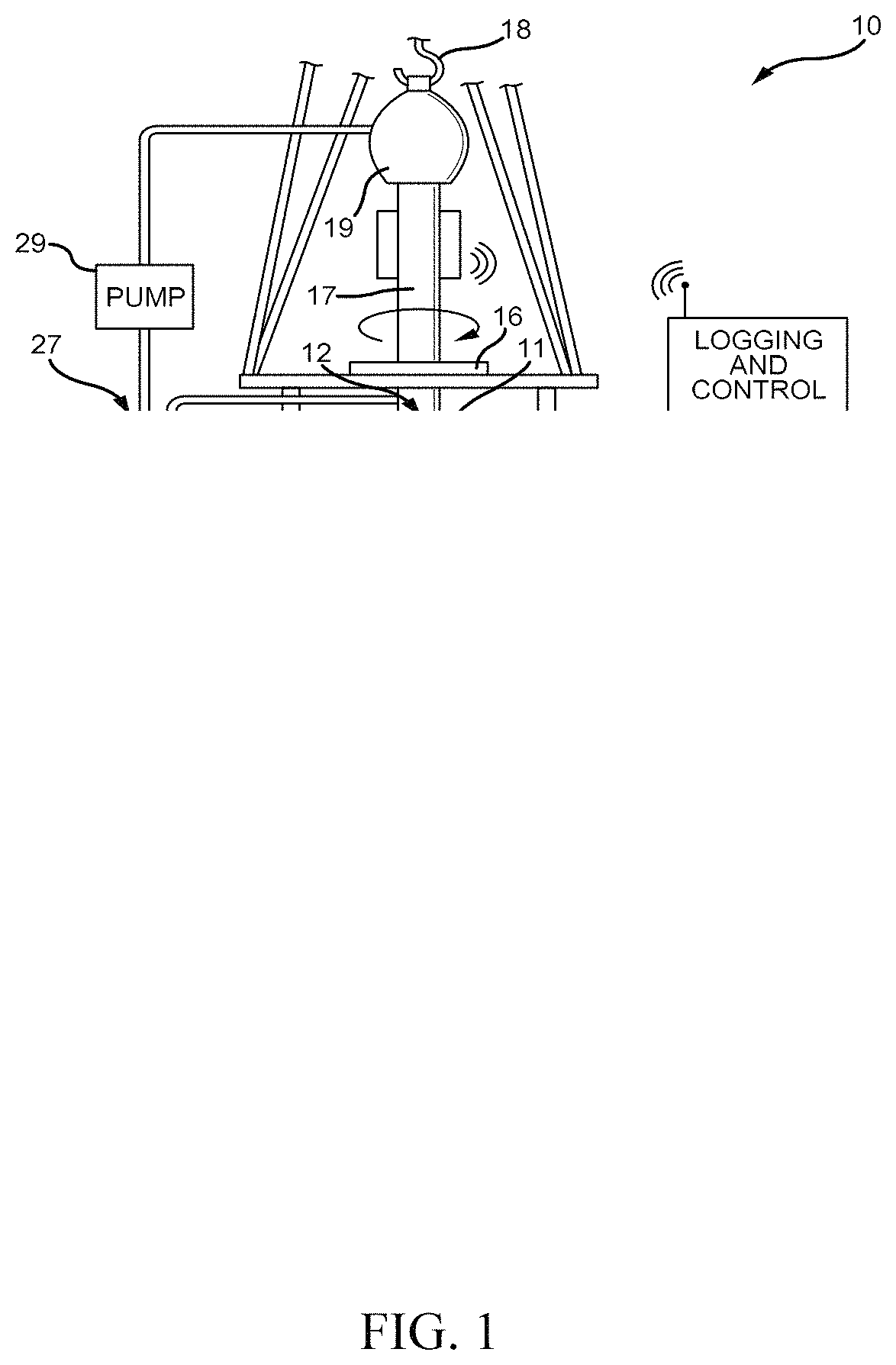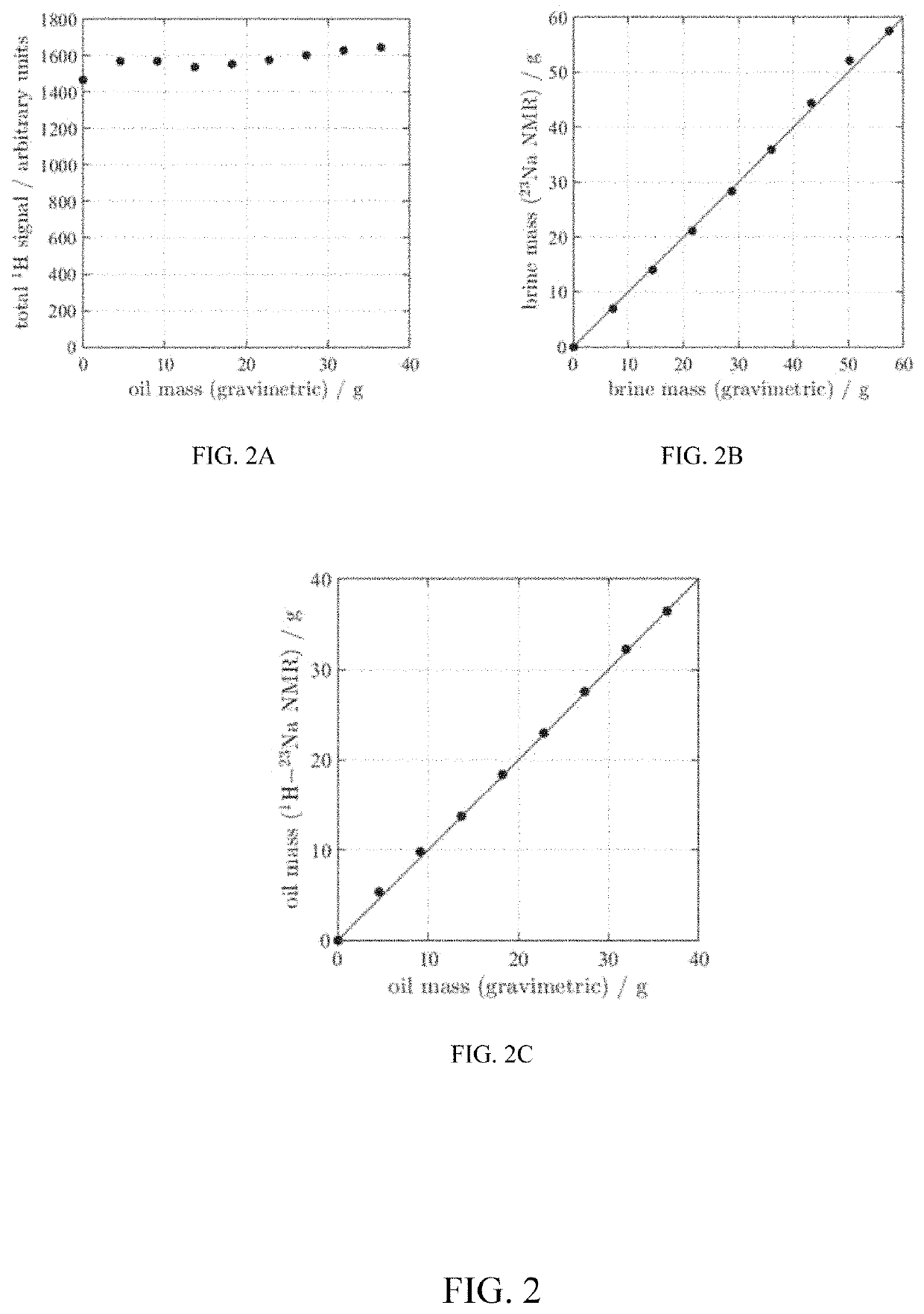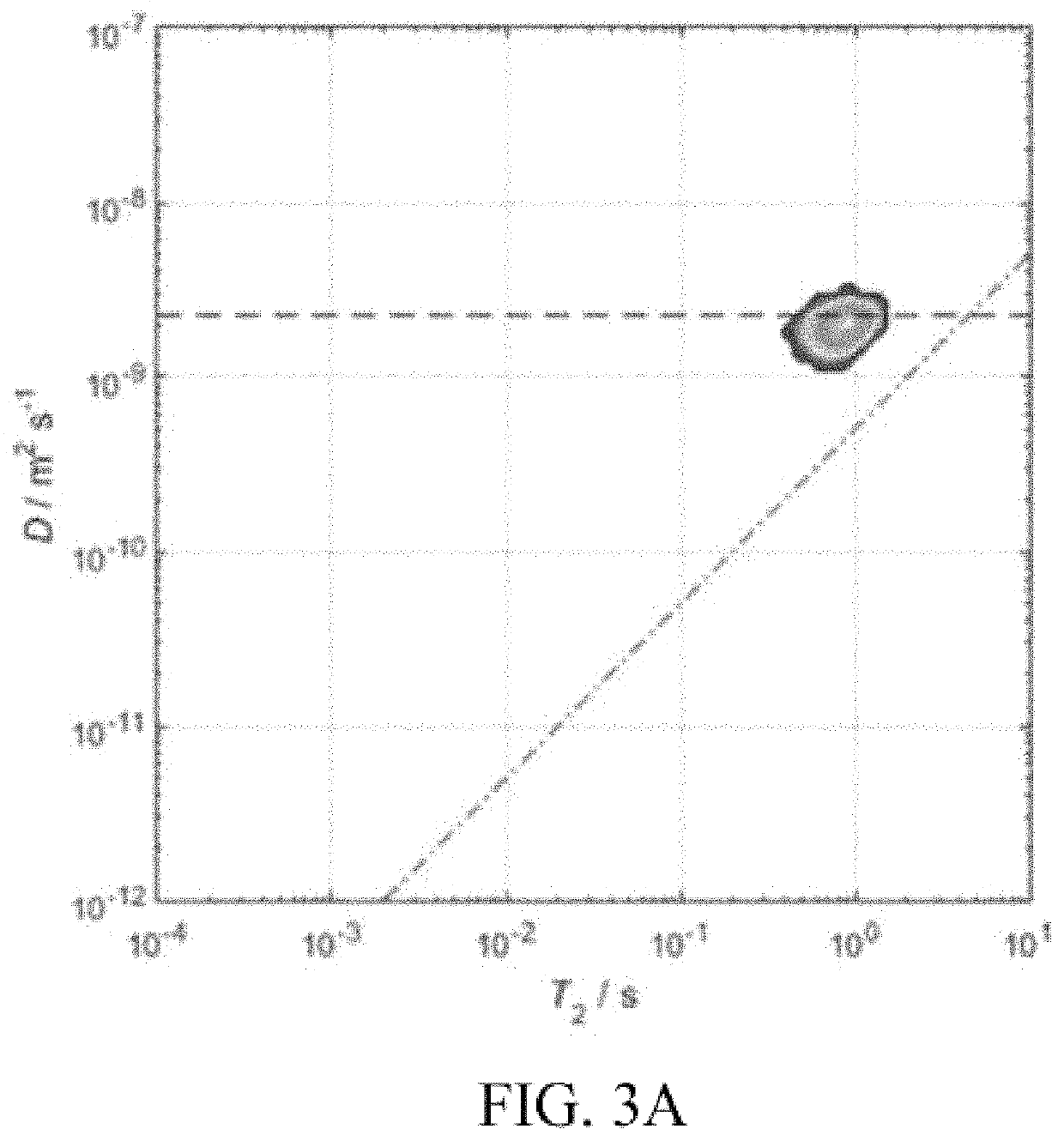Methods for interpreting NMR data
a nuclear magnetic resonance and data technology, applied in the field of methods for interpreting nuclear magnetic resonance (nmr) data, can solve the problem that the insufficient fluid-phase contrast mechanism of the inherent fluid-phase phase is not sufficient to discriminate the phases
- Summary
- Abstract
- Description
- Claims
- Application Information
AI Technical Summary
Benefits of technology
Problems solved by technology
Method used
Image
Examples
example 1
ane Emulsions
[0047]FIG. 2 shows an example of dual resonance detection in accordance with one or more embodiments of the present disclosure. In particular, FIG. 2 shows the example of dual resonance detection of 1H / 23Na for quantification of oil and brine in emulsion samples in the forms of total 1H signal as a function of oil fraction (FIG. 2A), brine mass determined by 23Na (FIG. 2B), and oil mass determined by difference in 1H and 23Na measurements (FIG. 2C).
[0048]A series of emulsion samples were generated ranging from 100% brine to 100% decane. The ratio of oil and brine was varied linearly between these two extremes. Standard 1H contrast mechanisms of T2 relaxation time or diffusion coefficient are unable to distinguish between oil and brine in these samples (see below for further details). To quantify the mass of oil and brine in each sample, a combination of 1H and 23Na measurements were used. The total 1H and 23Na signal amplitudes were obtained for each sample. Using the e...
example 2
ery Monitoring
[0054]The methods described in “Example 1” above are now demonstrated in FIGS. 3A through 3C in an example of dual resonance detection in a rock plug in accordance with one or more embodiments of the present disclosure. In particular, FIGS. 3A through 3C show coreflood monitoring of decane displaced by high-salinity brine in a Bentheimer sandstone plug. Conventional 1H D-T2 correlation plots are unable to distinguish between the cases of fully brine saturated (FIG. 3A) and 80% oil saturated (FIG. 3B). However, using 1H and 23Na detection, the oil and brine saturations can be monitored during the coreflood. The variation in saturation state as a function of time (volume brine injected) is shown in FIG. 3C.
[0055]The rock, a Bentheimer sandstone, was initially saturated with a high-salinity brine. The rock was mounted in a NMR-compatible rock core holder; details of the ErgoTech core holder are given in Tutunjian, P. N., Vinegar, H. J., Ferris, J. A., 1993. Nuclear magnet...
example 4
reflood Monitoring
[0064]Another example shows a combined 1H and 23Na measurement to monitor changes in both oil / brine saturation and salinity (sodium-salt content) during a low-salinity (Lo-Sal) coreflood. Lo-Sal waterflooding is a form of EOR, although the exact mechanism by which the change in salinity mobilizes additional oil is not well understood. The ability to monitor both the in situ oil saturation (with 1H NMR) and the salt content (with 23Na NMR) can provide new insights into the recovery mechanisms of Lo-Sal water flooding. For example, spatially resolved measurements will show whether the additional recovery of oil due to low-salinity brine is uniform along the core-plug or associated only with, say, a capillary end effect. An example of monitoring both oil saturation and salt content during a low-salinity coreflood is given in FIG. 5. In particular, FIG. 5 shows displacement of L2 oil from Estaillades limestone by (i) high-salinity brine and (ii) low-salinity brine. The...
PUM
| Property | Measurement | Unit |
|---|---|---|
| pore body size | aaaaa | aaaaa |
| pore body size | aaaaa | aaaaa |
| nuclear magnetic resonance | aaaaa | aaaaa |
Abstract
Description
Claims
Application Information
 Login to View More
Login to View More - R&D
- Intellectual Property
- Life Sciences
- Materials
- Tech Scout
- Unparalleled Data Quality
- Higher Quality Content
- 60% Fewer Hallucinations
Browse by: Latest US Patents, China's latest patents, Technical Efficacy Thesaurus, Application Domain, Technology Topic, Popular Technical Reports.
© 2025 PatSnap. All rights reserved.Legal|Privacy policy|Modern Slavery Act Transparency Statement|Sitemap|About US| Contact US: help@patsnap.com



